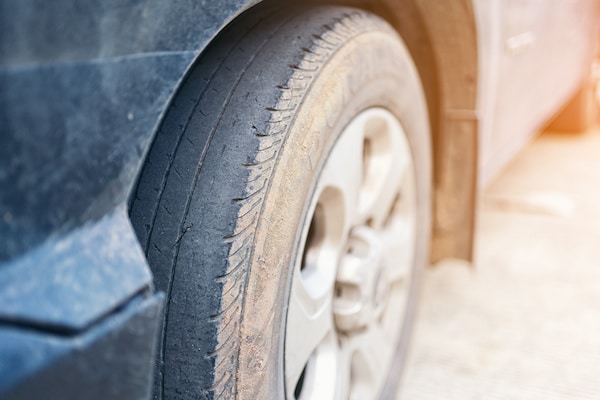
Tires are an important part of any car. After all, they are responsible for how your car performs, the comfort as you ride, and even your overall safety on the road. However, like with all other parts of your automotive, tires are at risk of wear and tear. Some wear out faster compared to others, and it has nothing to do with the quality of the road or the tires.
As a result, most drivers incur huge costs when replacing tires that have not lived up to their intended product life. To avoid this we have come up with a list of the common types of tire wear and what causes them.
Read on to understand more.
1. CUPPING WEAR
Cupping is a unique type of tread wear. Cupping looks like patchy worn out sections on your tire and it is often caused by repeated irregular up and down motions. In most cases, drivers might feel the tire bounce at very high speeds. When driving slowly, the ride can be very bumpy.
A worn-out suspension or a damaged shock absorber can put unnecessary strain on the tires. As a result, some parts of the tire will go through more friction compared to others.
2. INNER-EDGE WEAR
If more than one of your tires wear down the middle but not on the sides, inner edge wear might be the culprit. Inner edge wear is always a sign of over-inflated tires. Pumping too much air into your tires increases the pressure within the inner walls of the tire while forming a bulge at the center.
This shifts the contact patch to the center of the tire, instead of being equally distributed across the entire tire.
To avoid inner edge wear, make sure to keep your tires inflated to the pressure listed in your owner’s manual.
3. OUTER-EDGE WEAR
Tires that indicate excessive wear on the sides or shoulders are a sign of under inflation. This type of wear is the exact opposite of inner edge wear. Here, since there is not enough air pressure, the air in the tire is shifted towards the sides.
Constant underinflation can lead to tire failure. With outer edge wear, tires tend to overheat leading to tread separation and blowouts.
To avoid this, always make sure the tire pressure is always standard.
4. FEATHERING
Feathering is a type of uneven tread wear that is hard to spot visually. In most cases, you will need to run your fingers through the surface of the tire to feel the uneven surface. If you feel a worn tread on one side while the other is sharp, you might be a victim of feathering.
This type of tire wear is often caused by improper wheel alignment. The great news is that a simple wheel alignment will fix this problem. Unfortunately, you have to replace the whole tire.
5. FLAT SPOT WEAR
Flat spot tire wear occurs when drivers apply too many brakes. It can also be a result of genuine brake problems.
Suddenly applying brakes causes the wheels to stop. However, the forward momentum is still there. For this reason, the stationary tire will rub on the road surface leading to wear and tear. The spot where the tire comes into contact with the road is what develops into a flat spot wear.
6. ONE SIDE WEAR
Having only the inner edge or outer edge of the tire having signs of wear might be an indication of one-sided wear. In most cases, this type of wear is brought about by positive toe, camber, and caster. Overenthusiastic cornering is also a leading contributor to one-sided tire wear.
Have a professional check these parts and perform alignments where possible.
7. SIDE WALL WEAR
This type of tire wear occurs at the sidewall of the tire. Sidewall wear happens as a result of poor driving and parking habits. Some drivers scrap their tires against the curb causing this type of wear.
Sidewall wear weakens the core of the tire and in severe cases, the tire can buckle which leads to tire failure.
BEFORE YOU LEAVE
Regular checks are the best way to make sure your are driving on safe tires. However, if your tires seem worn out and you don’t understand why, it might be time to look for professional help.
If you are in need of tire replacements or repairs, we are more than happy to help. Bring your vehicle into our auto repair shop today and get down to the root cause of your early tire wear.
For more information, contact us.

